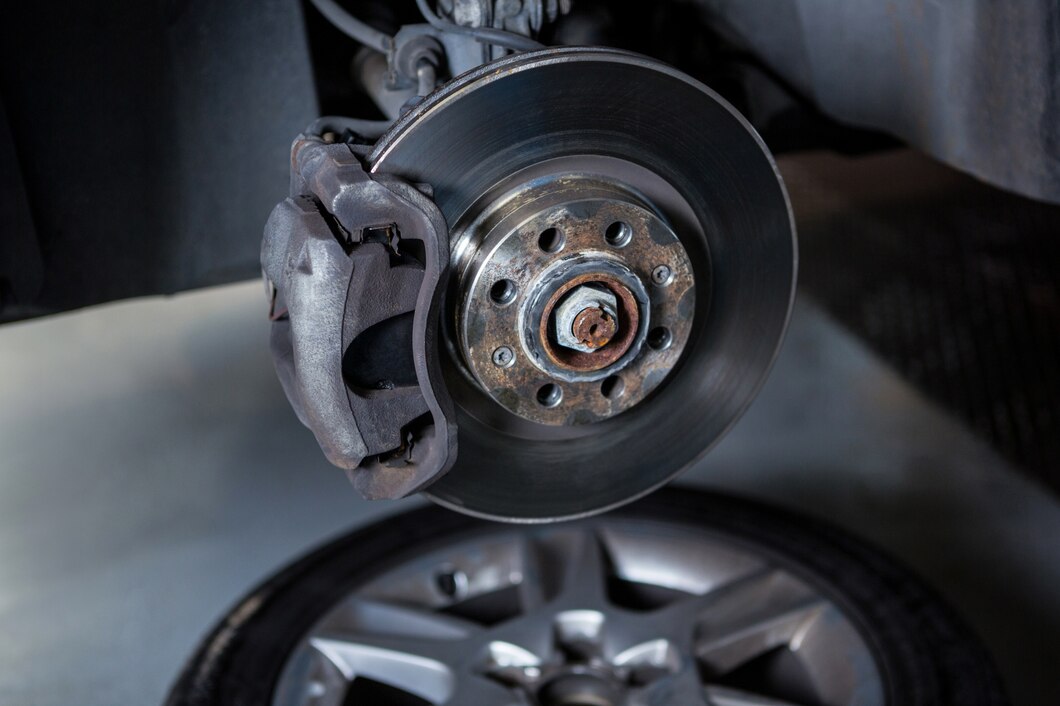Brake pads and discs are essential components of your car’s braking system, ensuring your vehicle can stop safely and efficiently. Over time, these parts wear out and need replacement to maintain optimal braking performance. Recognizing the early signs that your car needs new brake pads or discs can prevent potential accidents and costly repairs. Here are some key indicators to watch for:
1. Squeaking or Squealing Noises
One of the most common signs that your brake pads need replacement is a high-pitched squeaking or squealing noise when you apply the brakes. This sound is often caused by a small metal shim, known as an indicator, which becomes exposed as the brake pads wear down. The noise serves as a warning that your brake pads are nearing the end of their lifespan.
2. Grinding Sounds
A grinding noise when braking is a more severe sign of worn brake pads. This sound typically occurs when the brake pads have worn down completely, causing the metal backing plate to make contact with the brake disc. This metal-on-metal friction can damage the brake discs, making it essential to replace the brake pads immediately to avoid further damage.
3. Vibration or Pulsation
If you feel a vibration or pulsation through the brake pedal or steering wheel when braking, it could indicate warped brake discs. Warping usually occurs due to excessive heat buildup from heavy braking or prolonged use of worn brake pads. This uneven surface can cause the brake pads to lose proper contact with the discs, resulting in an inconsistent braking experience.
4. Longer Stopping Distances
An increase in the distance it takes for your car to come to a complete stop is a clear indication that your brake pads are worn. As brake pads thin out, they become less effective at generating the necessary friction to stop the vehicle quickly. This can be particularly dangerous in emergency braking situations.
5. Brake Warning Light
Many modern vehicles have a brake warning light on the dashboard. If this light illuminates, it could indicate low brake fluid levels, worn brake pads, or other issues within the braking system. Always consult your vehicle’s manual and have the braking system inspected by a professional when the brake warning light comes on.
6. Visible Wear
Regularly inspecting your brake pads through the wheel spokes can give you a visual indication of their condition. If the brake pad material appears less than a quarter inch thick, it’s time to replace them. Additionally, look for any grooves or scoring on the brake discs, which can indicate wear and damage.
7. Pulling to One Side
If your car pulls to one side when you apply the brakes, it could be a sign of uneven brake pad wear or a problem with the brake discs. This issue can affect your vehicle’s handling and safety, requiring immediate attention from a mechanic to diagnose and resolve the underlying problem.
Addressing Worn Brake Pads and Discs
If you notice any of these signs, it’s crucial to take action promptly:
- Schedule a Professional Inspection: Have your braking system inspected by a certified mechanic. They can accurately diagnose the issue and recommend whether you need new brake pads, discs, or other related components.
- Replace Worn Parts: If your brake pads or discs are worn, replace them with high-quality parts that meet or exceed the manufacturer’s specifications. This ensures optimal performance and safety.
- Regular Maintenance: Incorporate regular brake inspections into your vehicle’s maintenance routine. This helps catch wear and tear early, preventing more severe problems down the line.
Maintaining your car’s braking system is crucial for your safety and the safety of others on the road. By recognizing the early signs that your brake pads or discs need replacement, you can take proactive steps to address these issues. Regular inspections and timely replacements will ensure your brakes perform reliably, providing peace of mind every time you drive.











